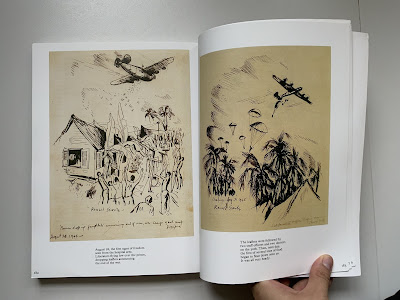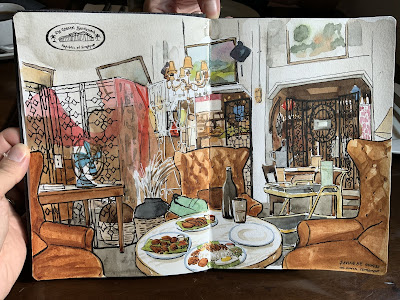 |
| The Coastal Settlement, © Favian Ee, Apr 2020 |
I drew the sketch above in a restaurant in Singapore called The Coastal Settlement. It’s a lovely eatery in an eastern corner of our island filled with a wide range and eclectic mix of nostalgic objects from the 70’s and 80’s as part of their decor. In one corner there is even a wall of Vespa scooters! We were originally given a seat there but I requested for somewhere nearer a window where it was brighter. I wanted to sketch, after all. So we were ushered to this quaint corner with a coffeetable surrounded by 4 large leather seats and gate grilles all about. We ordered, ate, and I spent the next 3 hours trying to capture the scene.
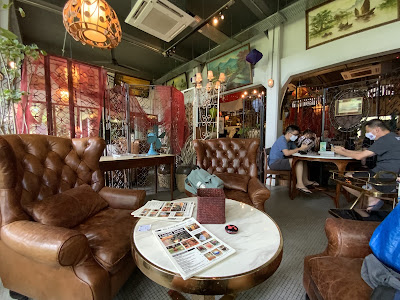 |
| © Favian Ee, Apr 2020 |
Where does one start drawing a scene so complex and with so many details? It begins like any other sketch - planning your approach. Knowing what tools at your disposal and how you can use them to your advantage is definitely a big part of this. For example, there are several gates which are painted both black and white. That’s good, because I have black pens and opaque white gel pens that I can use to overlay over an area I have drawn earlier, which means I can draw the background first and just go over it with the black and white pens.
But what about where to start? A complex scene can be intimidating, but you can simplify things by noticing the largest shapes that give the scene structure. Ignore the details. Details distract. If you get too caught up with them, you’ll get sucked into a black hole and lose sight of the whole. For my sketch, I decided to leave out the ceiling, so the main big shapes I’ve identified are the following:
- The table in the middle
- The 3 large leather chairs
- The gate grilles
- The openings and the pillars
- The tables on the left and right in the midground
- The gates
Those are the items I would draw first. Once those are in place, it is easier to place the details within those areas.
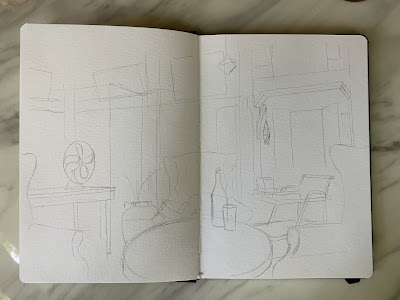 |
| © Favian Ee, Apr 2020 |
Once I have the structure of the sketch, I have to decide my approach to applying colours. I am using transparent watercolours. That means if I want an area to be light, i need to leave it untouched by the darker colours - I cannot paint light colours over darks. I’m not using gouache, acrylics, or oils which are opaque media that allow me to do that. So I need to build the sketch from light to dark, starting by colouring in the big areas/shapes.
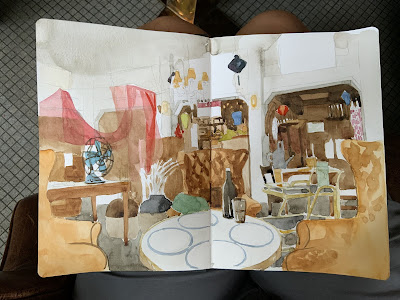 |
| © Favian Ee, Apr 2020 |
You may notice that I have painted the dark background around the white pillars rather than painting the pillars themselves. I also started painting the furthest areas from me first, building the darks in layers. The fences are not drawn yet, but I have put in the translucent drape on the leftmost fence. The base colours of the seats have been added in. Around this point I was getting quite intimidated by the details already, but I just carried on. Trust the process. I keep building the sketch from background to foreground, from light to dark. Because I’ve pencilled out the large shapes, I don’t get lost in the details and I know where I am at any point and how one part relates to the whole.
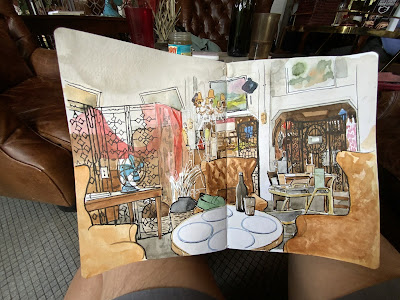 |
| © Favian Ee, Apr 2020 |
I usually begin a sketch with ink outlines if I’m using ink, but in this case I deferred it to a later stage. I had probably sat there for 2-3 hours already and was getting somewhat stressed and wanted to hurry up. It is a popular establishment after all, and others might need a table. Using ink outlines would help me put things in place and give more definition. I could also take the opportunity to put in the grilles, there are at least 4 kinds of gates with different patterns. That was stressful until I realised that once I figured out one section of a repeating pattern, I could complete drawing the gates with relative ease. I still made some mistakes in some of the patterns, and I have to live with it and carry on. At the same time, I continued deepening the blacks and adding more details as I went along. A white gel pen was used to draw in the white gate.
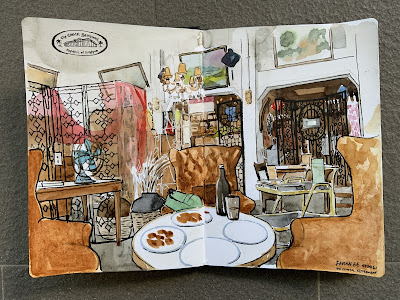 |
| © Favian Ee, Apr 2020 |
I probably spent around 3 hours or so in the restaurant eating and sketching, so I took some photos to touch up the sketch in my hotel room. We were on staycation just across from the restaurant. I’m not in the habit of sketching my food because I like to eat it while it’s hot, so I added it in later. Added more details and deepening of the blacks too. I decided to draw without measuring my scene this time as I felt I could get away with some inaccuracies because of the business of the scene, and if I went for accuracy, I might not be able to fit as much into my A5 sketchbook. Instead I noted the proportions and relative positions of items by eye (it takes some practice and experience) and took note of positional markers, such as how the 3 seats’ tops were more or less aligned horizontally, etc.
At this point I still felt it was unfinished. The food had not been drawn properly and the left and right chairs lacked definition. The food needed shadows, texture, form, colour. Photographs were used to finish drawing that. The trolley on the right needed darker surfaces to differentiate it from the ground. So a few final touch ups were in place. Pity I cannot correct the mistakes in the gate patterns, but because of the business of the scene, not many will notice that.
 |
| Completed sketch, © Favian Ee, Apr 2020 |
Just some advice for drawing complicated scenes:
- Start with the biggest shapes. Break down your sketch from there. Work from big to small. Add details last
- Paint in large areas of colour first. Layer in details later
- If using watercolour, take note of the light areas first. Leave those areas untouched (or if they have a colour cast, put in a light wash, leave to dry, then put a darker layer around it without painting the light area)
- Take your time to build the sketch. Don’t try to capture everything at once
- Take photos if you need to complete it at home
Hope you have found this helpful!
More photos:
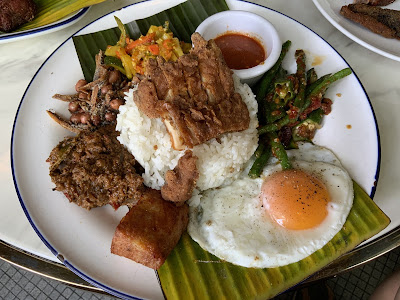 |
| Nasi Campur, © Favian Ee, Apr 2020 |
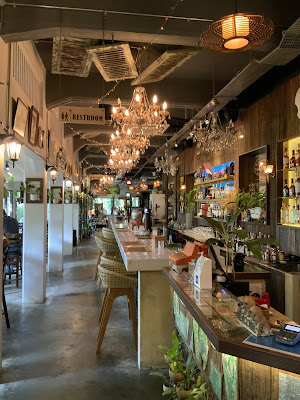 |
| © Favian Ee, Apr 2020 |
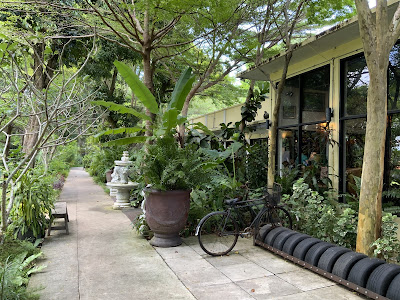 |
| © Favian Ee, Apr 2020 |
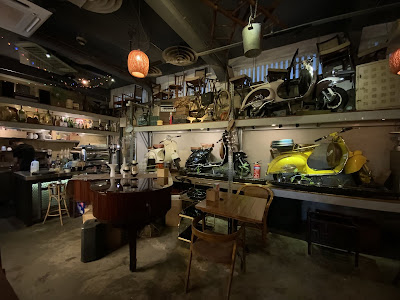 |
| © Favian Ee, Apr 2020 |
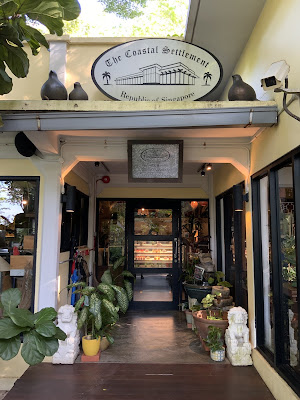 |
| © Favian Ee, Apr 2020 |
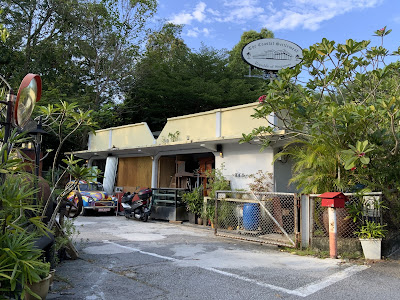 |
| © Favian Ee, Apr 2020 |
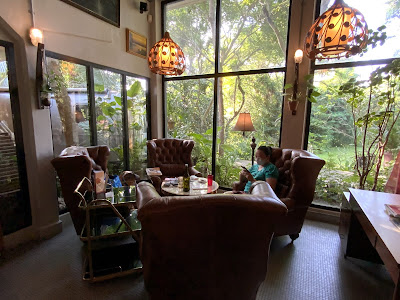 |
| Our Table, © Favian Ee, Apr 2020 |


































